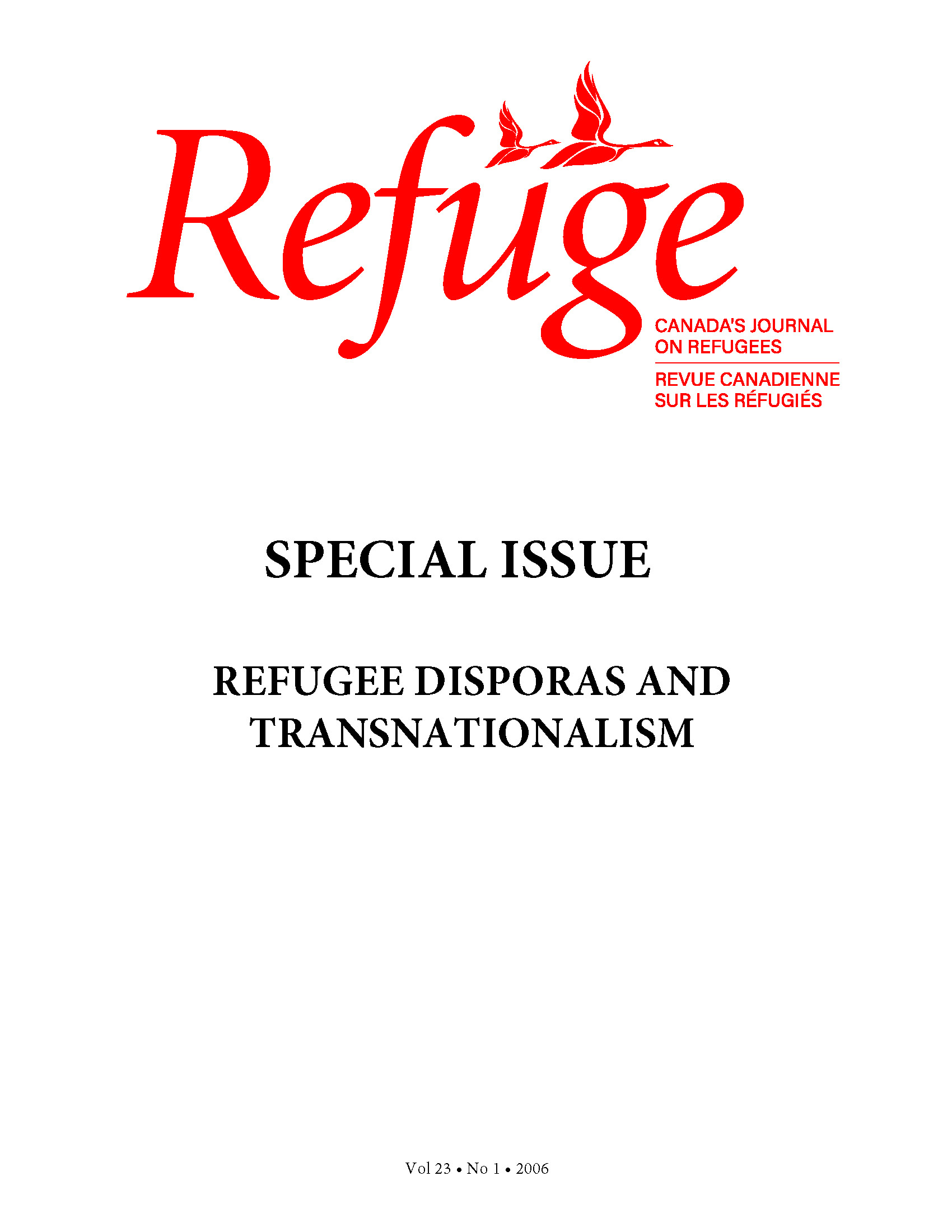Refugees in Diaspora: From Durable Solutions to Transnational Relations
DOI:
https://doi.org/10.25071/1920-7336.21338Keywords:
transnationalism, refugees, diaspora, durable solutionsAbstract
When people flee conflict or persecution, a common pattern is for most to seek safety in other parts of their country, for a substantial number to look for refuge in a neighbouring country or countries, and for a smaller number to seek asylum in countries further afield, perhaps on other continents. If displacement persists and people consolidate themselves in their territories of refuge, complex relations will develop among these different domains of what we may call the “refugee diaspora”: that is, among those at home, those in neighbouring territories, and those spread further afield. Each of these domains corresponds to some extent to one of the sites associated with the three “durable solutions” that UNHCR is charged with pursuing for refugees: integration in the country of first asylum, resettlement in a third country, or return to the homeland. Taking its cue from the burgeoning literature on diasporas and transnationalism, this paper explores whether the notion of “durable solutions” can be squared with the transnational character of refugees. It offers a simple schema for considering diaspora and transnational relations, and suggests that transnationalism might be considered in itself as an “enduring” if not a “durable” solution to displacement.Metrics
Downloads
Published
How to Cite
Issue
Section
License
Copyright (c) 2006 Nicholas Van Hear

This work is licensed under a Creative Commons Attribution-NonCommercial 4.0 International License.
Refuge authors retain the copyright over their work, and license it to the general public under the Creative Commons Attribution-Non Commercial License International (CC BY-NC 4.0). This license allows for non-commercial use, reproduction and adaption of the material in any medium or format, with proper attribution. For general information on Creative Commons licences, visit the Creative Commons site. For the CC BY-NC 4.0 license, review the human readable summary.







